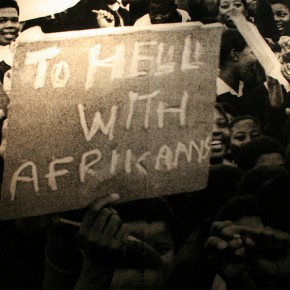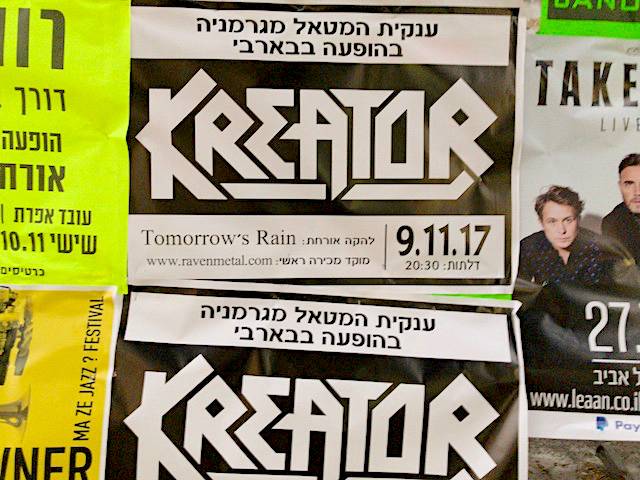Historically, scarcity has played a crucial role in metal, particularly in underground extreme metal. Until recently, there were considerable logistical barriers to recording, releasing, circulating and publicising metal recordings. It took considerable time, money and commitment to make a demo, to trade it and to market it. Copying tapes, printing flyers and hand-answering fanzine interviews required a certain degree of determination. Information was also difficult to come by. It took time to accumulate knowledge about how the scene worked and who the key people and institutions were in it.
These logistical challenges acted as a kind of filter that ensured that not everyone who might have aspired to release their own music could actually do so. That doesn’t mean that only quality acts got through the filtering process. To the extent that artists with less capital and other resources could make it through, the process was unfair. Who knows how many exciting and innovative artists who didn’t want to spend their lives addressing envelopes were lost to metal? But at the very least, the filtering process did ensure that the number of releases was much more manageable than today. This slowed the scene down, ensuring that innovation and new sounds took time to spread. The work it used to take to develop scenic knowledge ensured that there were identifiable scenic ‘careers’. The pleasures of the underground awaited those who were willing to take the time and effort to discover them.
Metal scenes also used to have processes of obsolescence built in, in which some sounds and practices went out of fashion while others were taken up. These processes were never as pronounced in metal as in some other music scenes, such as dance music, that have always eaten their own young at a frenzied pace. However, they were still important in refreshing and renewing the greater genre. The early 1990s were a significant period in this regard. In mainstream metal there was something of a ‘mass extinction event’ in which best-selling bands of the 1980s were hit hard by grunge. At the same time in the underground, death metal peaked as a force for innovation, and black metal started to take centre stage. Of course, 1980s-style heavy metal never completely died out and nor did death metal. But their eclipse in the early 1990s at least allowed them to be reborn and reworked in new ways later in the decade, and in the 2000s.
In the past, metal scenes had shape and movement. They changed and evolved at a pace that was manageable and discernible. All this was predicated on scarcity, on shifting patterns of availability of certain kinds of sounds. In today’s age of abundance, nothing ever becomes truly obsolete. Artists and styles that would once have faded away can survive and thrive in niches. The lack of barriers to entry into the scene have resulted in an endless flood of new releases that even the most assiduous of critics find difficult to organise.Where end of year reviews in metal publications used to discern some kind of pattern to the previous twelve months, today’s end of year reviews highlight great releases, yet rarely find a broader narrative to put them into. None of this means that there isn’t still great music being made, or that metal is artistically dead. The problem is that without a discernible shape or movement to metal, the impact of new releases becomes dissipated. Many of the most canonical works of metal were canonised because they appeared at the crest of a stylistic wave, because they both exemplified and catalysed something that was emergent.

Despite the radical changes to metal scenes in the last few years, metal’s scenic infrastructure is outwardly not too dissimilar to that of twenty years ago. There are still countless metal labels, and some of the biggest, such as Metal Blade, now have a very long history. Even if demo tapes are mostly extinct, getting a record deal is still the dream of most metal bands starting out. The usual career cycle of any halfway successful band remains write-record-tour. Metal publications, whether online or in print, are still focused on reviews and interviews with bands who have just released something. It’s a familiar story.

This doesn’t mean that nothing has really changed. Rather, the persistence of metal institutions is a striking demonstration of how attached metal scenes are to the traditional practices of metal. Metal bands have not shown great enthusiasm for developing alternative models of distribution. Even acts that in part owe their success to social media – such as Job For A Cowboy, who achieved prominence via myspace – have gone on to sign to record labels and to tour and record in the conventional manner.
During the late 1990s and early 2000s, I was struck by how underground scene members did not switch to e-mail as soon as it became widely available. Hand written letters, flyers, demo tapes and the like remained standard well into the 2000s. Even today, there is a determined effort to revive previously old formats. Limited edition vinyl and cassette releases are more and more common, thanks to labels and distros such as Nuclear War Now and Teutonic Satan. In 2012, Terrorizer magazine bundled a tape by Electric Wizard with one of their issues, and Decibel magazine has released a number of flexi-discs (and note also that the print editions of these magazines are still surviving.)
This attachment to old formats and practices is not simply due to nostalgia, or a reactionary failure to adapt to a new reality. Rather, it is an implicit recognition that if metal scenes simply transferred production and circulation to virtual spaces, something important would be lost. Without the paraphernalia of scenic infrastructure and meat-space production, the scene would abandon itself completely to abundance, losing any means of slowing down and organising the flood of metal. Much of the metal scene today is therefore reacting to the crisis of abundance with a desperate rear-guard action to preserve scarcity and structure.
A partial exception to the crisis of abundance is live performance. Live shows and tours do not seem to be any more abundant today than they were in previous decades. While for bigger bands live shows and attendant merchandising may help to cushion some of the blows they’ve taken from declining recorded music sales, more underground bands may in fact find touring even more difficult as labels cannot offer enough of a subsidy. The increasing abundance and popularity of metal festivals, particularly in Europe, has undoubtedly helped smaller bands sustain live careers. Viewed as a whole then, live performance in metal is caught in an uneasy equilibrium between scarcity and abundance.
One of the ironies of abundance in metal is that it produces a different kind of scarcity. Money is ever-scarcer in metal scenes as record sales deteriorate. The size of metal’s audience has not necessarily kept pace with the ever-increasing torrent of bands and music. The new abundance also means that metal no longer has much of a ‘shape’, a dynamic, a purpose. Everything coexists simultaneously. Indeed, metal is everywhere – and it is nowhere.
Part 2 in a series. Photographs courtesy of Ragnar, Bob Grahame and Caren Parmelee. Published under a Creative Commons license.





